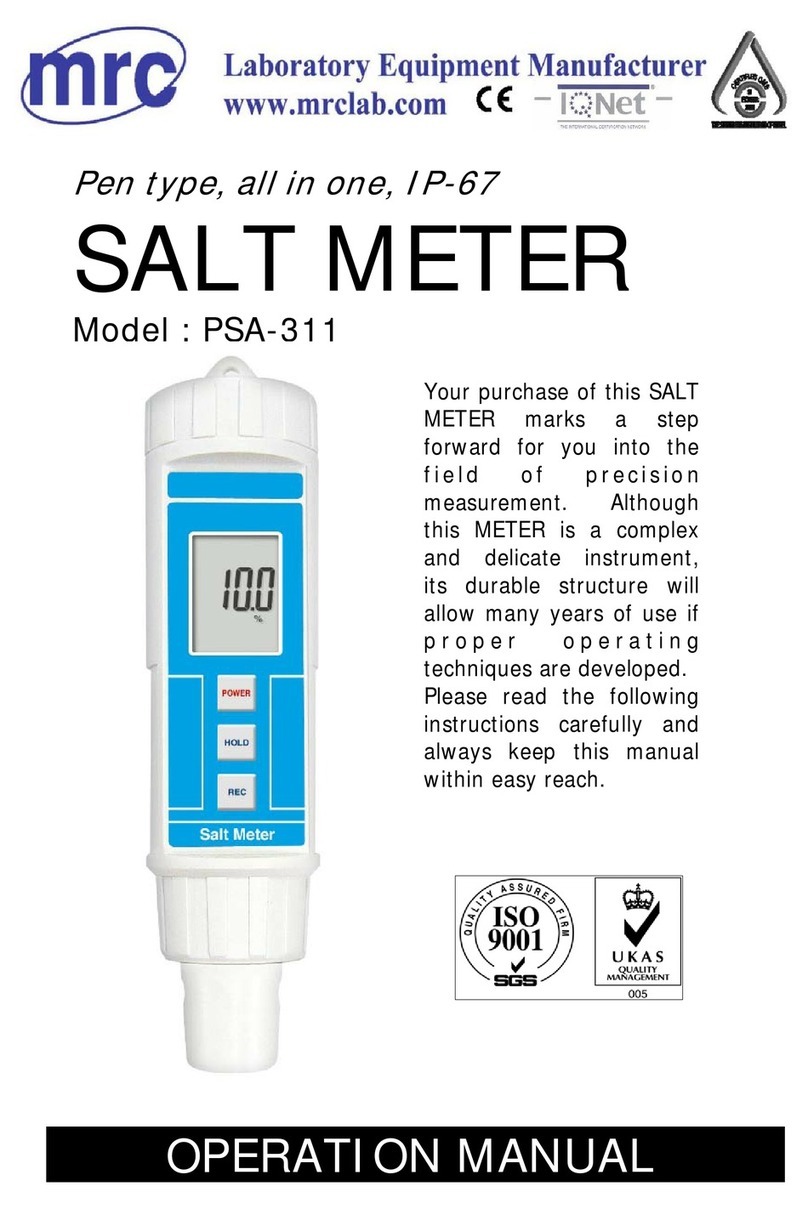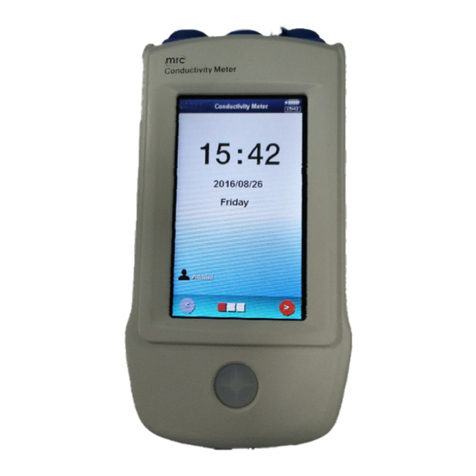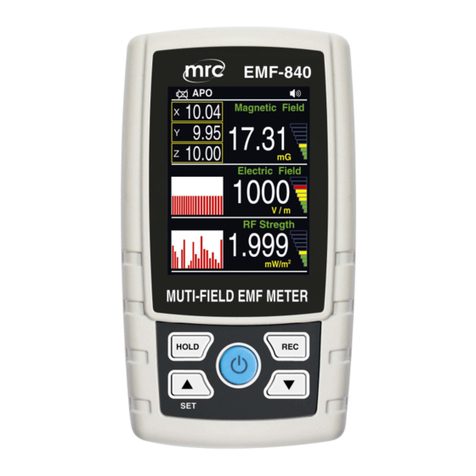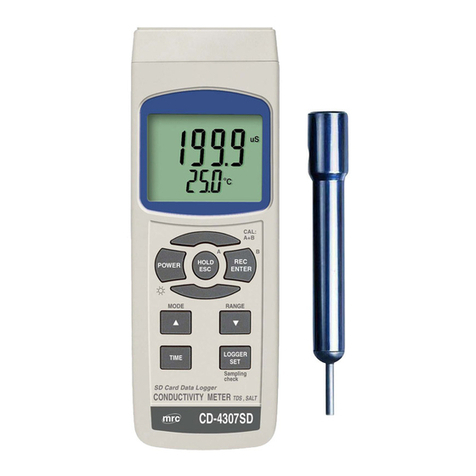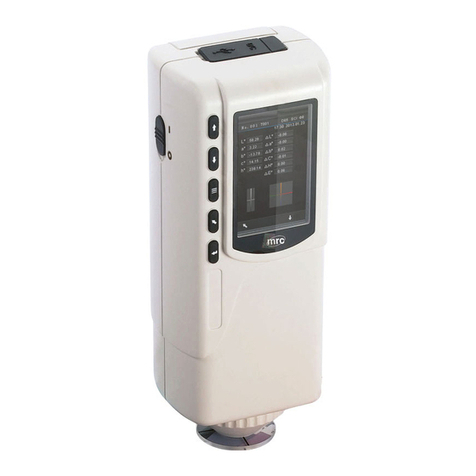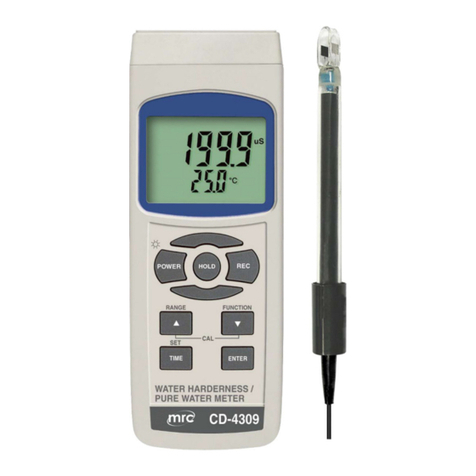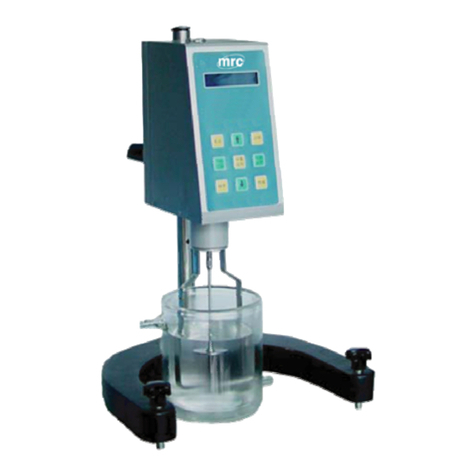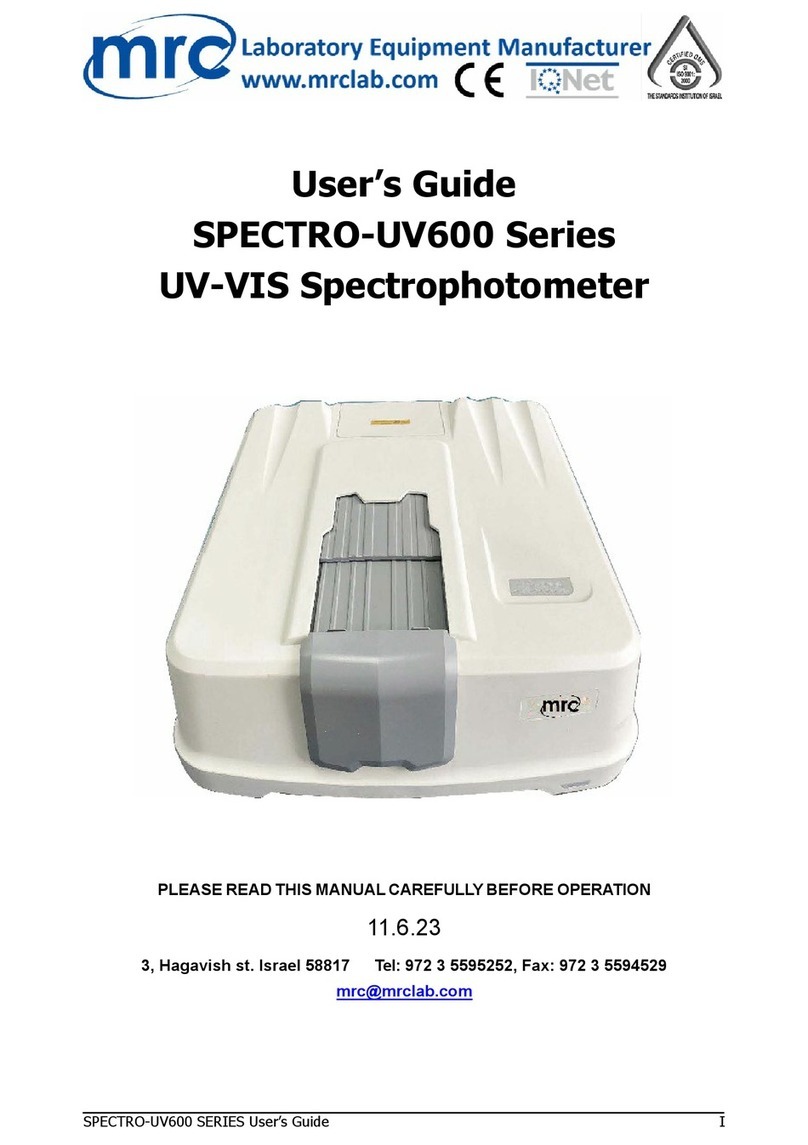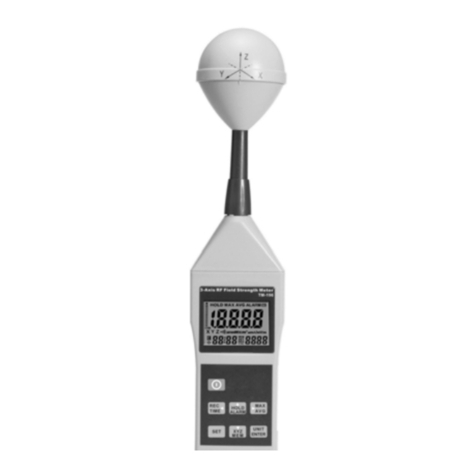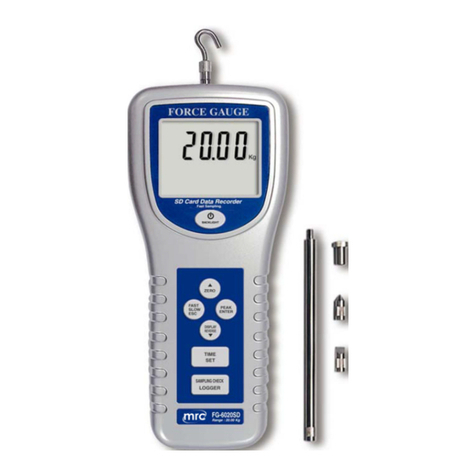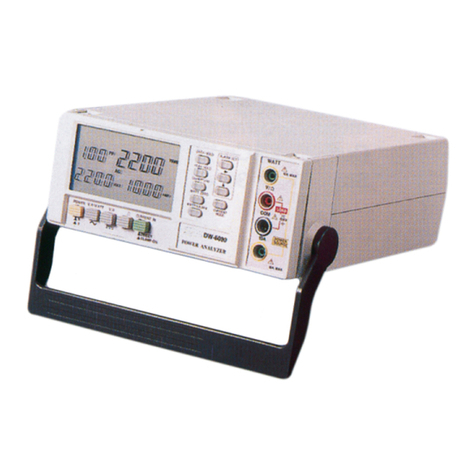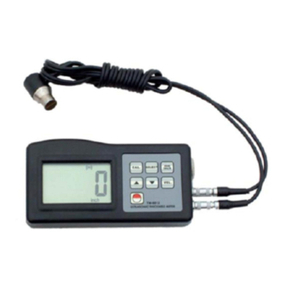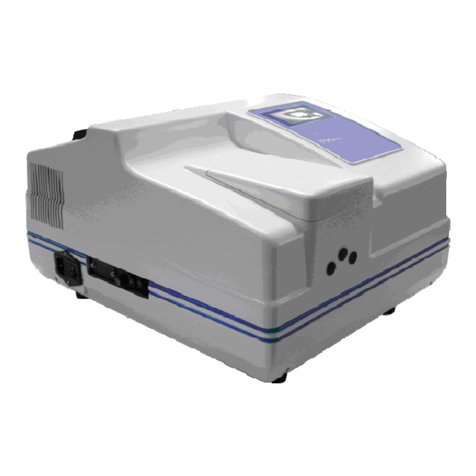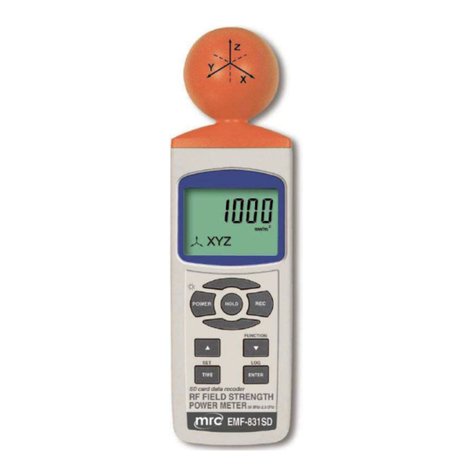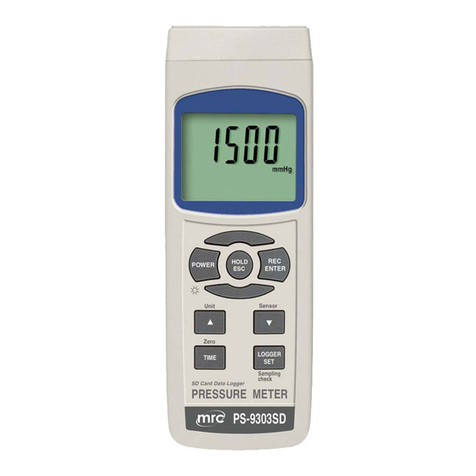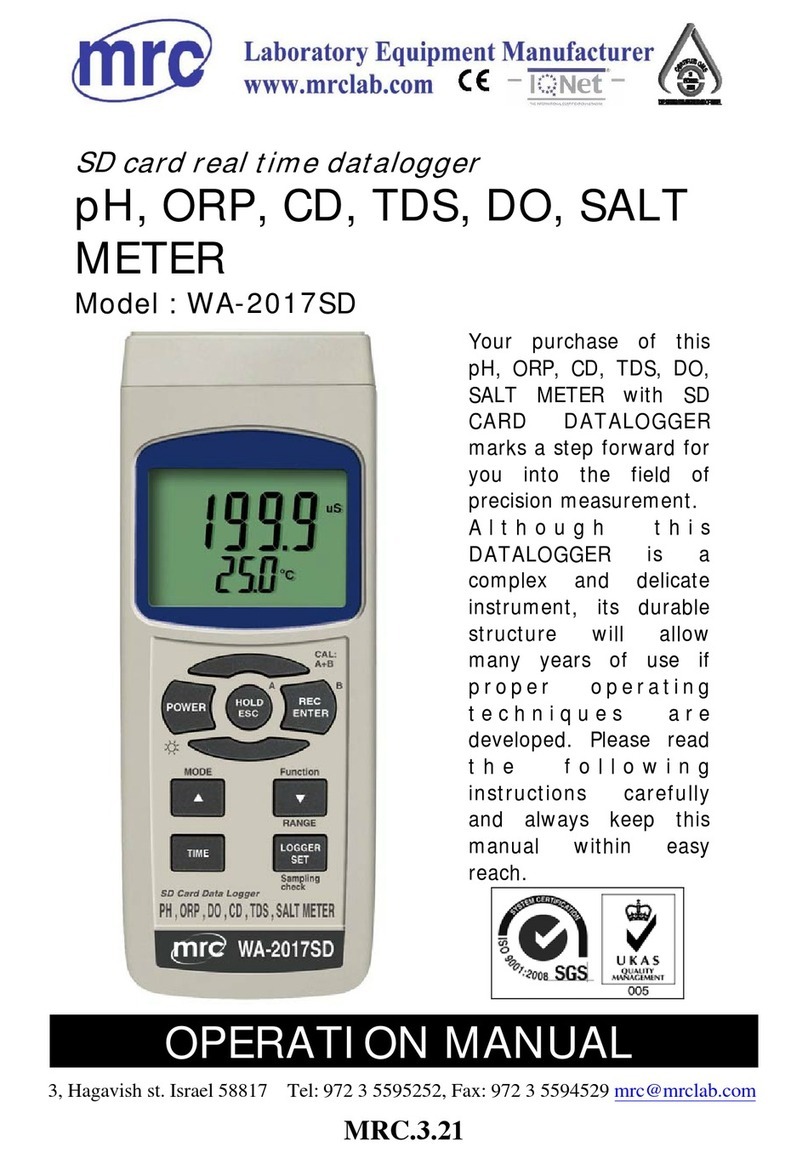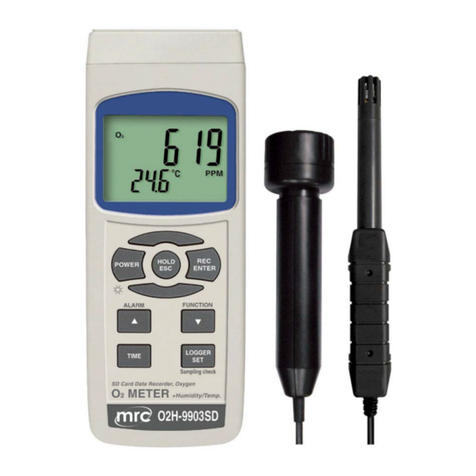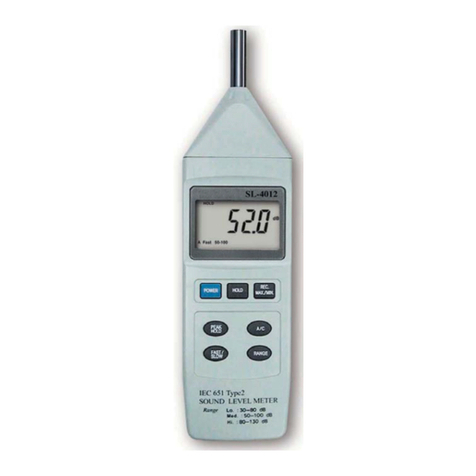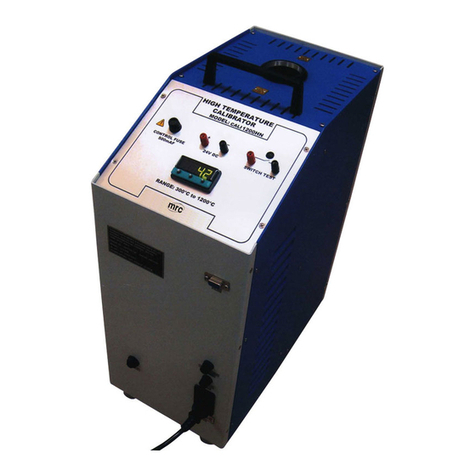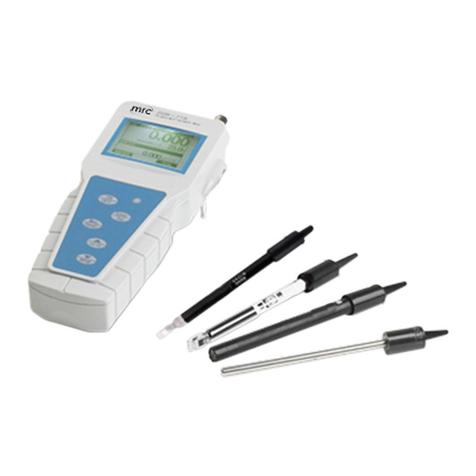
PLEASE READ THIS MANUAL CAREFULLY BEFORE OPERATION
3,
Hagavish
st.
Israel
58817
Tel:
972
3
5595252,
Fax:
972
3
5594529
[email protected]
MRC.VER.01-04.10
Step 2.
Hold daylight plate in the direction of a light source and look into the eyepiece.
You will see a circular field with graduations down the center (you may have
to focus the eyepiece to clearly see the graduations). The upper portion of the
field should be blue, while the lower portion should be white.(The pictures
showed here and showed in step 3.& step 4 are only as reference, The right
specific scale is listed in the product.)
Step 3.
Using distilled water or calibration liquid as a sample, look into the eyepiece
and turn the Calibration Screw until the boundary between the upper blue field
and the lower white field meet exactly on the zero scale, such as showed in the
picture. That is the end of calibration. Make sure ambient room temperature is
correct for the solution you are using (20
0
for our solution that is
68
0
F). When working temperature of the room or the environment (not the
sample) changes by more than 50 F, we recommend recalibrating to maintain
accuracy and reproducibility.
I f the instrument is equipped with Automatic Temperature Compensation
system, the ambient working temperature of the room must be 20%(68
°F)whenever the instrument is recalibrated. Once calibrated, shifts in ambient
temperature within the acceptable range (10
0
C-30° C) should not affect
accuracy.
Step 4.
Do step I. using the specimen of liquids which will be measured as the
substitution of distilled water or calibration solution. Then do step2 and step3.
When do step3 again, you can take the reading where the boundary line of blue
and white cross the graduated scale. The scale will provide a direct reading of
the Brix concentration.
Model Standard data
REF-114 Brix 29.6
Warning - Maintenance
l. Accurate measurement depends on careful calibration. Follow the instructions above
closely. Note: Shifts in ambient room temperature of the prism prior to measurement. The
prism and sample must be at the same temperature for accurate results.
2. Do not expose the instrument to damp working conditions, and do not immerse the
instrument in water. If the instrument becomes foggy, water has entered the body. Call a
qualified service technician or contact your dealer.
3. Do not measure abrasive or corrosive chemicals with this instrument. They can damage
the prism's'coating:--
4. Clean the instrument between each measurement using a soft, damp cloth. Failure to
clean the prism on a regular basis will lead to inaccurate results and damage to the prism's
coating.
5. This is an optical instrument. It requires careful handling and storage. Failure to do so
can result in damage to the optical components and its basic structure. With care, this
instrument will provide years of reliable service.













